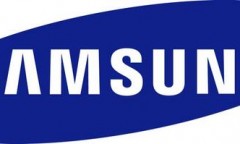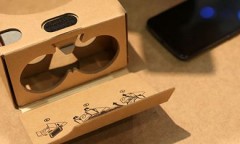By Steve Pak, | January 27, 2016

Google Cardboard VR Headset
Google reported it has shipped 5 million Google Cardboard virtual reality (VR) headsets since the device was launched about a year and half ago. The figures are very impressive considering it is competing with Facebook's Oculus Rift, Samsung Gear VR and the upcoming Sony PlayStation VR headset. Alphabet's subsidiary has developed the foldable cardboard viewer as an entry-level gateway to the virtual world, and partnered with content providers including The New York Times, Disney, and Volvo.
Like Us on Facebook
Google Cardboard is very easy to set up and use. In fact, operators just have to put their smartphones in the VR viewer.
During the past 19 months since Google Cardboard's launch, 25 million Cardboard apps were downloaded from the Google Play store, according to Los Angeles Times. Headset owners also used their viewers to watch over 350,000 hours of VR video.
Google's Cardboard figures give it a head start over AR/VR devices from rivals such as Sony, Samsung, Facebook, and Microsoft. In fact, the company even offers instructions for VR fans to build their own Cardboard viewer.
The price tag of a Cardboard unit is just $20. That compares to the pricier Samsung Gear VR ($100), Facebook's Oculus Rift ($600), and Microsoft's HoloLens ($3,000).
However, a recent study by Frank N. Magid Associates revealed that gamers are more familiar with high-end VR gadgets compared to Google Cardboard. Most knew about Oculus Rift (25 percent), followed by Gear VR (21 percent), PlayStation VR (20 percent), and Google Cardboard (17 percent).
Google Vice President of VR Clay Bavor told Time that Cardboard's biggest benefit is that any smartphone owner can use it. However, he also hinted that the company might launch more powerful devices in the future, according to The Verge.
Bavor pointed out that Google has a high amount of know-now, resources, and spirit. He revealed that the Cardboard VR headset is not the "end of the line."
Bavor has been working for the search giant for about one decade. He explained to Time an early technical problem was figuring out how headset users could interact with the mobile phone in the foldable paper box.
-
Use of Coronavirus Pandemic Drones Raises Privacy Concerns: Drones Spread Fear, Local Officials Say

-
Coronavirus Hampers The Delivery Of Lockheed Martin F-35 Stealth Fighters For 2020

-
Instagram Speeds Up Plans to Add Account Memorialization Feature Due to COVID-19 Deaths

-
NASA: Perseverance Plans to Bring 'Mars Rock' to Earth in 2031

-
600 Dead And 3,000 In The Hospital as Iranians Believed Drinking High-Concentrations of Alcohol Can Cure The Coronavirus

-
600 Dead And 3,000 In The Hospital as Iranians Believed Drinking High-Concentrations of Alcohol Can Cure The Coronavirus

-
COVID-19: Doctors, Nurses Use Virtual Reality to Learn New Skills in Treating Coronavirus Patients











